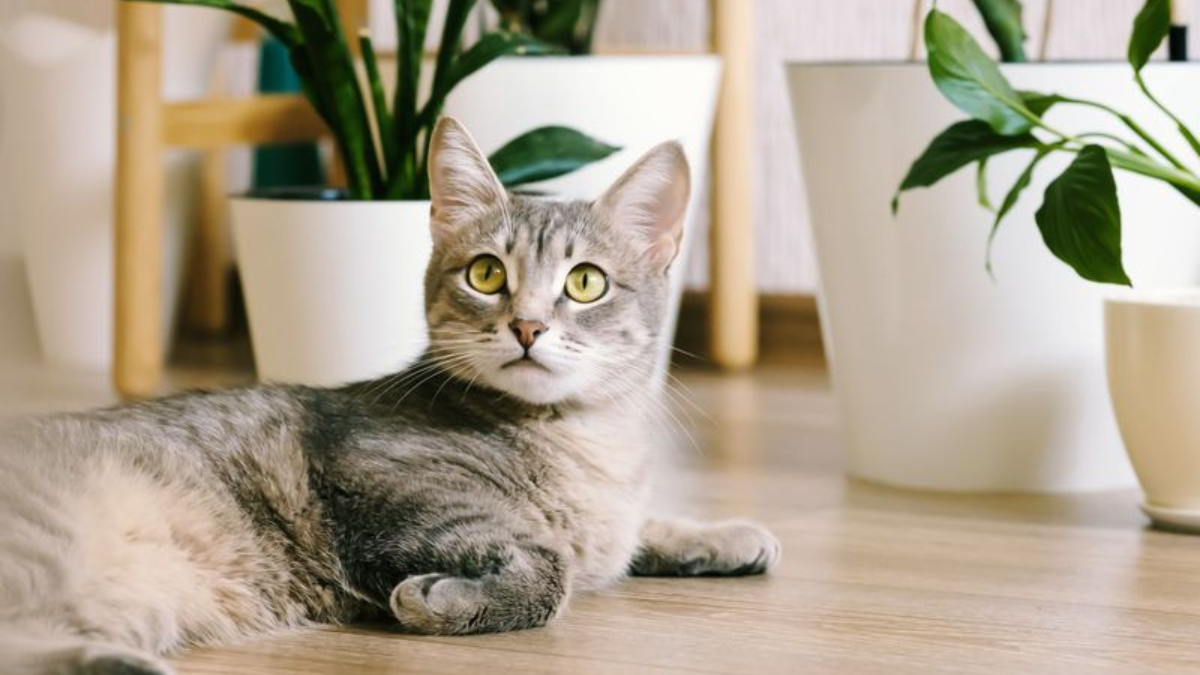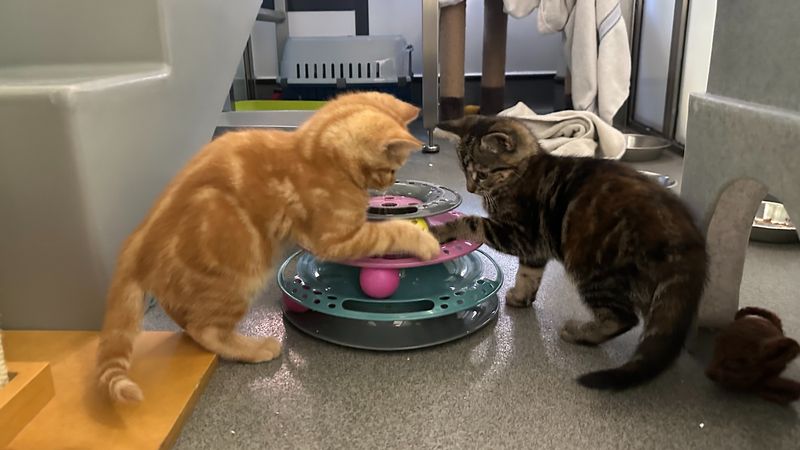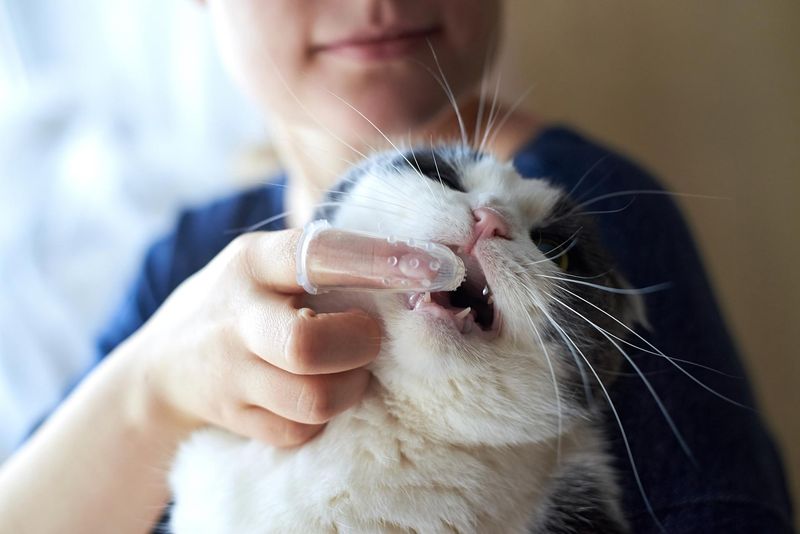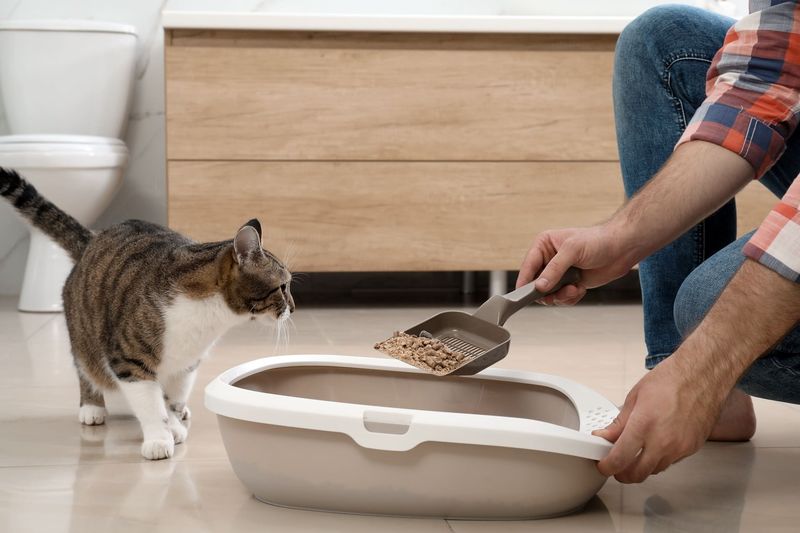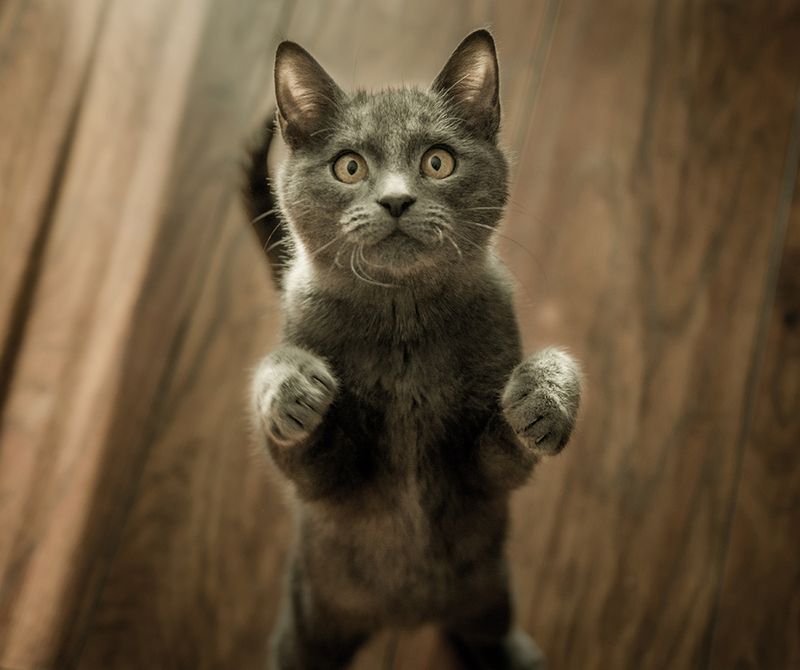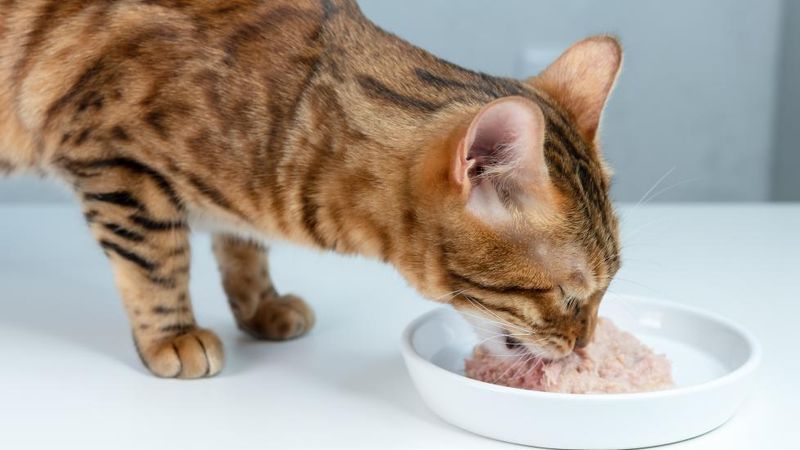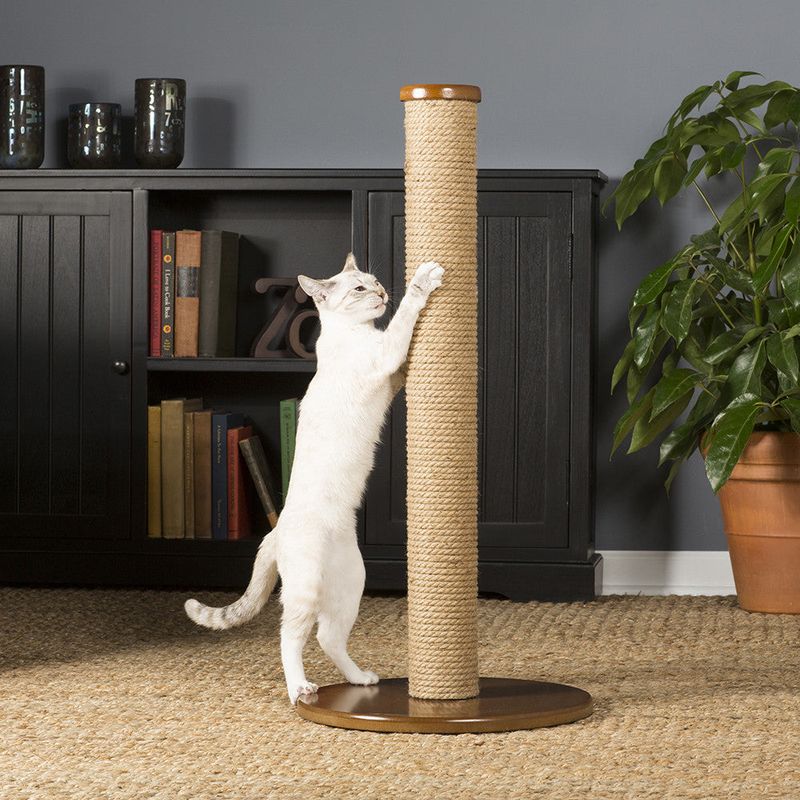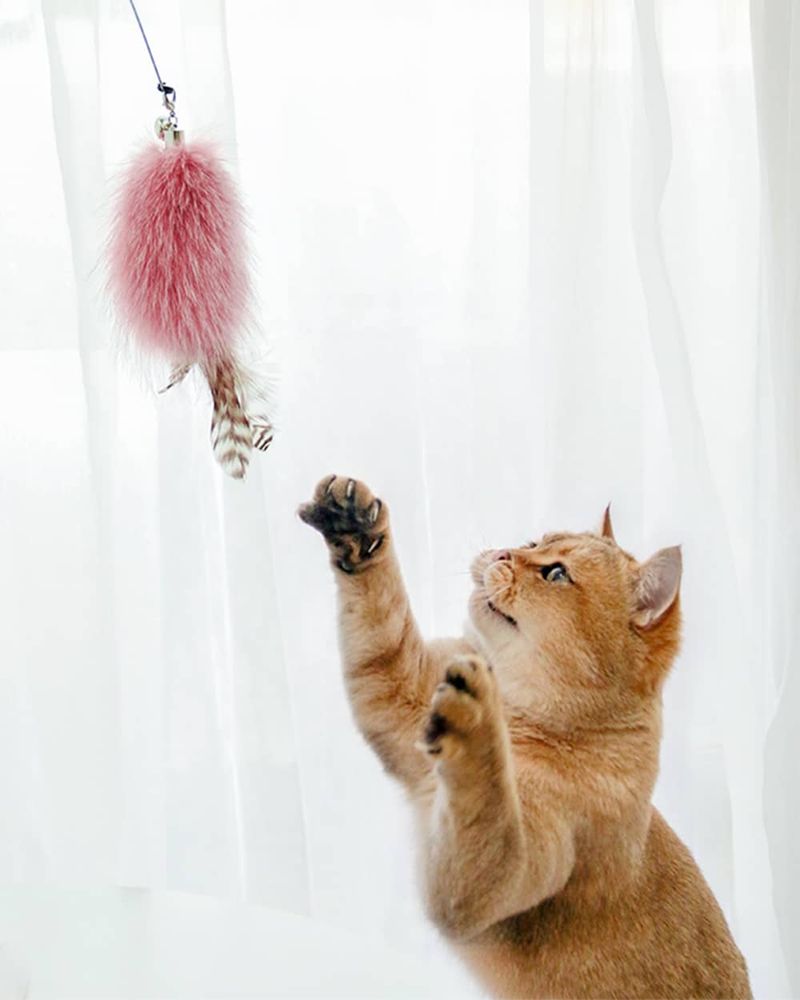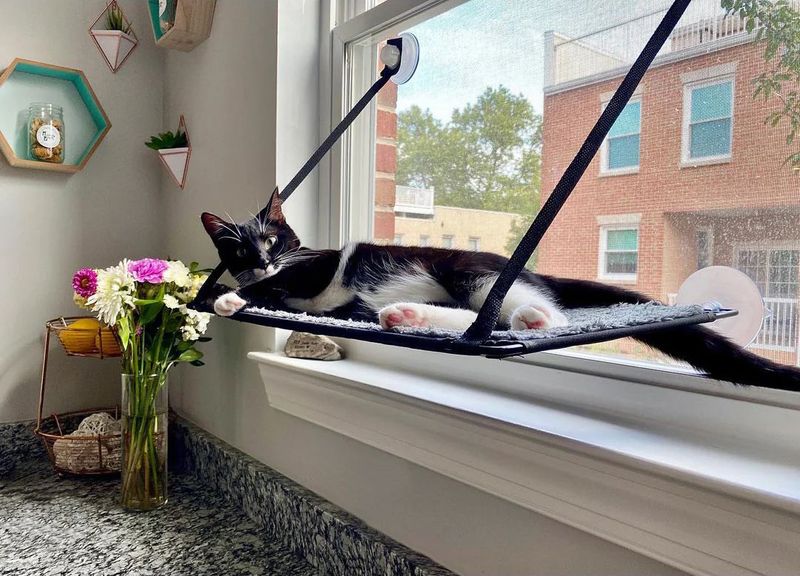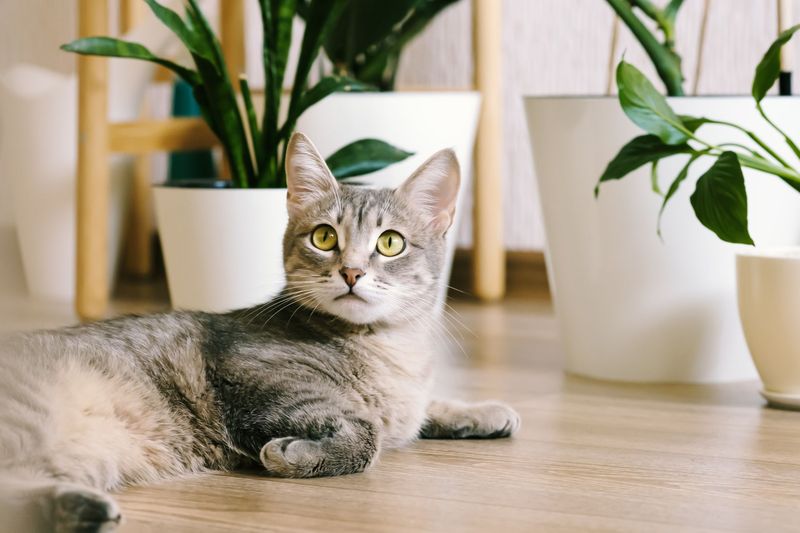📖 Table of Content:
- 1. Skimping on Water Stations
- 2. Overlooking Dental Health
- 3. Using Punishment for Training
- 4. Ignoring Litter Box Cleanliness
- 5. Misreading Body Language
- 6. Feeding Only Dry Food
- 7. Choosing the Wrong Scratching Surfaces
- 8. Skipping Regular Play Sessions
- 9. Forcing Social Interactions
- 10. Missing Health Warning Signs
- 11. Using Toxic Houseplants and Cleaners
Cats may seem independent, but they rely on us for their health and happiness. Even the most devoted cat parents can slip up in ways that affect their furry friend’s well-being. Many of these mistakes happen because we misunderstand what cats really need. Recognizing these common errors can help you become an even better caretaker for your feline companion.
1. Skimping on Water Stations
Many cat owners provide just one water bowl, usually next to the food dish. Cats naturally prefer water sources away from their food to avoid contamination. Their wild ancestors never drank where they ate!
Setting up multiple water stations throughout your home encourages better hydration. Fresh, clean water in different locations helps prevent urinary tract issues that commonly plague indoor cats.
Consider adding a cat fountain too. The moving water appeals to cats’ instinct to seek fresh water sources and may entice reluctant drinkers to stay properly hydrated.
2. Overlooking Dental Health
Bad breath in cats isn’t normal—it’s often a sign of dental disease. By age three, most cats already have some form of dental issue that owners completely miss until it becomes serious.
Regular brushing with cat-specific toothpaste prevents painful conditions and expensive vet bills. Start slow, using a finger brush and introducing the process gradually with lots of praise.
Dental treats and toys designed for teeth cleaning help too, but they don’t replace brushing. Annual dental check-ups catch problems early when they’re easier and less expensive to treat.
3. Using Punishment for Training
Squirt bottles, loud noises, or physical discipline don’t teach cats—they just create fear. Cats don’t connect punishment with their behavior; they only learn to be afraid of you.
Positive reinforcement works much better. When your cat uses the scratching post instead of furniture, reward with treats or praise. For unwanted behaviors, redirect attention to appropriate alternatives.
Consistency matters more than correction. Cats thrive on routine and clear expectations. Remember that many problem behaviors stem from boredom or stress, not rebellion. Address the root cause rather than punishing the symptom.
4. Ignoring Litter Box Cleanliness
Cats are naturally clean animals with sensitive noses. A dirty litter box feels to them like a filthy, unusable bathroom feels to us. Daily scooping isn’t just a nice idea—it’s essential for your cat’s comfort and stress levels.
Complete litter changes should happen weekly, along with washing the box with mild, unscented soap. Strong chemical cleaners leave residues cats avoid.
The rule of thumb: provide one more litter box than the number of cats in your home. Place boxes in quiet, accessible locations away from food areas and loud appliances. Your cat’s bathroom habits reflect their overall wellbeing.
5. Misreading Body Language
A wagging tail in cats means irritation or overstimulation—not happiness like in dogs. Belly exposure isn’t always an invitation for pets; it often shows trust, but touching may trigger defensive reactions.
Slow blinking, however, signals comfort and affection. Return these “cat kisses” to strengthen your bond. Ears flattened back indicate fear or aggression, while forward-pointing ears show interest and contentment.
Purring usually indicates pleasure but can also signal stress or pain in certain contexts. Learning to read these subtle cues helps you respond appropriately to your cat’s changing emotional states and needs throughout the day.
6. Feeding Only Dry Food
Dry kibble alone doesn’t provide enough moisture for cats, who evolved to get most of their hydration from prey. This chronic mild dehydration contributes to kidney problems and urinary tract issues over time.
Wet food helps meet hydration needs while mimicking a more natural diet. Even adding water to dry food improves moisture intake. Free-feeding dry food all day leads to grazing habits that contribute to feline obesity.
Scheduled meals of appropriate portions help maintain healthy weight and allow you to monitor appetite changes that might signal health problems. The best diets typically combine high-quality wet and dry options tailored to your cat’s age and health needs.
7. Choosing the Wrong Scratching Surfaces
Scratching isn’t bad behavior—it’s essential for claw maintenance, exercise, and territorial marking. Many owners buy scratching posts that are too short, wobbly, or covered in materials cats don’t prefer.
Tall, sturdy posts allow full stretching. Most cats naturally prefer sisal rope or corrugated cardboard over carpet-covered posts. Horizontal scratchers work for some cats, while others need vertical surfaces.
Place scratchers near sleeping areas and in social spaces where your cat spends time. Cats often scratch after waking up and during social interactions. Sprinkle with catnip or silvervine to make new scratchers more appealing than your furniture.
8. Skipping Regular Play Sessions
Indoor cats need daily interactive play to stay physically and mentally healthy. Without it, boredom leads to obesity, depression, and behavior problems like excessive grooming or aggression.
Wand toys that mimic prey movements trigger natural hunting instincts. Move toys like a bird or mouse would move—darting, hiding, and occasionally freezing. End sessions with a “catch” so your cat feels successful.
Just 10-15 minutes twice daily makes a huge difference in your cat’s wellbeing. Rotate toys to keep interest high, and remember that social play strengthens your bond while providing crucial exercise. Your participation matters—automated toys can’t replace interactive human play.
9. Forcing Social Interactions
Picking up cats who don’t want to be held or bringing them to meet visitors often backfires. Cats need control over their social interactions and may become fearful or aggressive when forced into uncomfortable situations.
Let cats approach new people on their own terms. Provide high perches and hiding spots so they can observe safely before deciding to engage. Never pull a cat from their hiding place during stressful times.
Respect signals that your cat needs space. Flattened ears, tail twitching, and dilated pupils mean “leave me alone right now.” Creating positive associations with visitors through treats and calm environments builds confidence over time.
10. Missing Health Warning Signs
Subtle behavior changes often signal health problems long before obvious symptoms appear. Drinking or urinating more than usual could indicate diabetes or kidney disease. Suddenly avoiding the litter box may mean urinary tract infection or pain.
Changes in appetite, activity level, or grooming habits warrant attention. Healthy cats maintain consistent routines, so any deviation deserves notice. Weight changes, particularly loss, require prompt veterinary evaluation.
Annual check-ups catch problems early, even without obvious symptoms. Senior cats (over 7 years) benefit from twice-yearly exams and baseline bloodwork to track changes. Don’t wait until your cat seems very ill—by then, conditions are often advanced.
11. Using Toxic Houseplants and Cleaners
Lilies can cause fatal kidney failure in cats—even pollen or water from the vase is dangerous. Other common toxic plants include philodendron, pothos, and many holiday plants like poinsettias and mistletoe.
Household cleaners leave residues that cats absorb through their paw pads, then ingest during grooming. Essential oils diffused in homes can cause respiratory issues and liver damage in cats, whose bodies cannot process these compounds.
Research plant safety before bringing greenery home. Use pet-safe cleaning products, particularly on floors and surfaces where cats walk or rest. Keep medications, even over-the-counter pills, secured away from curious paws and mouths.
